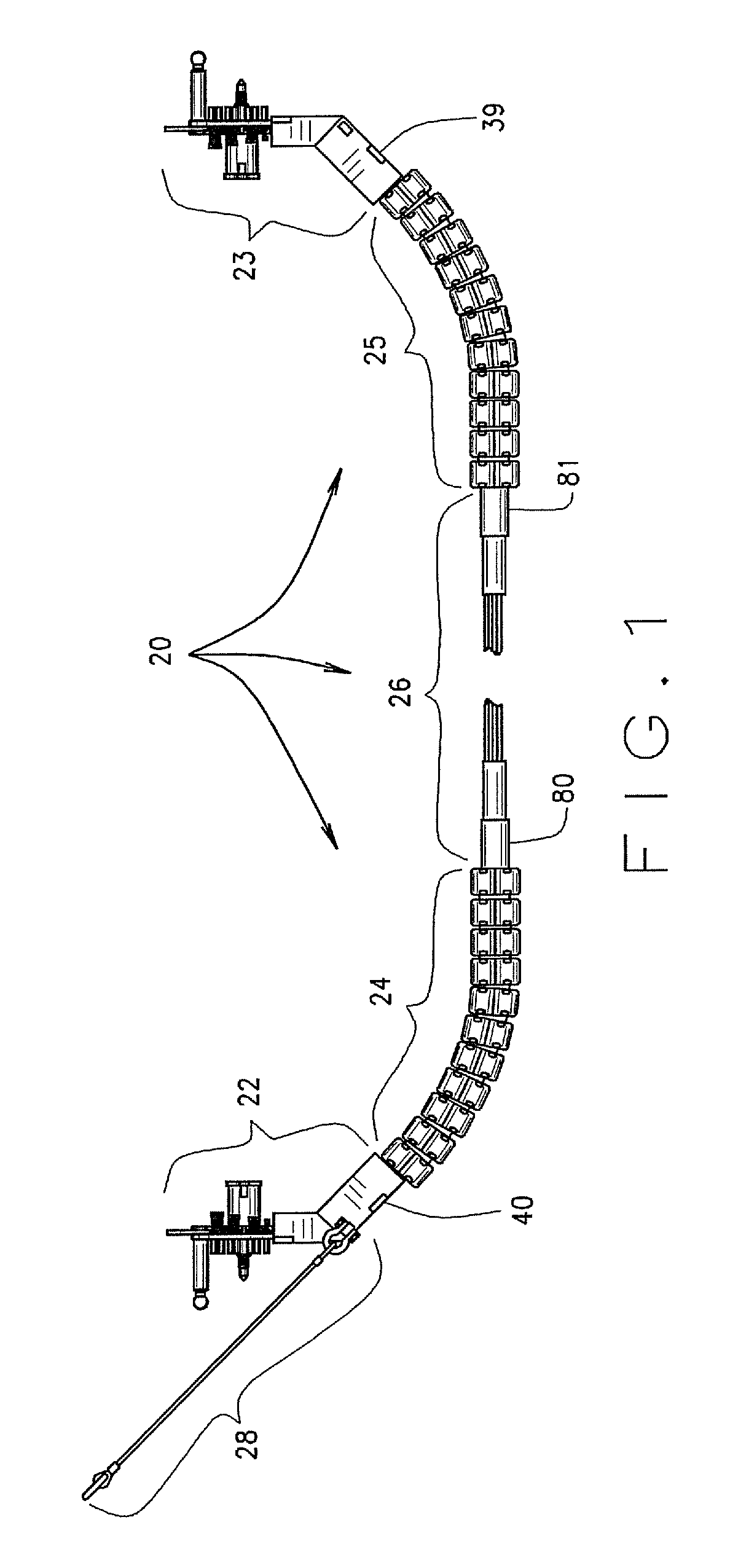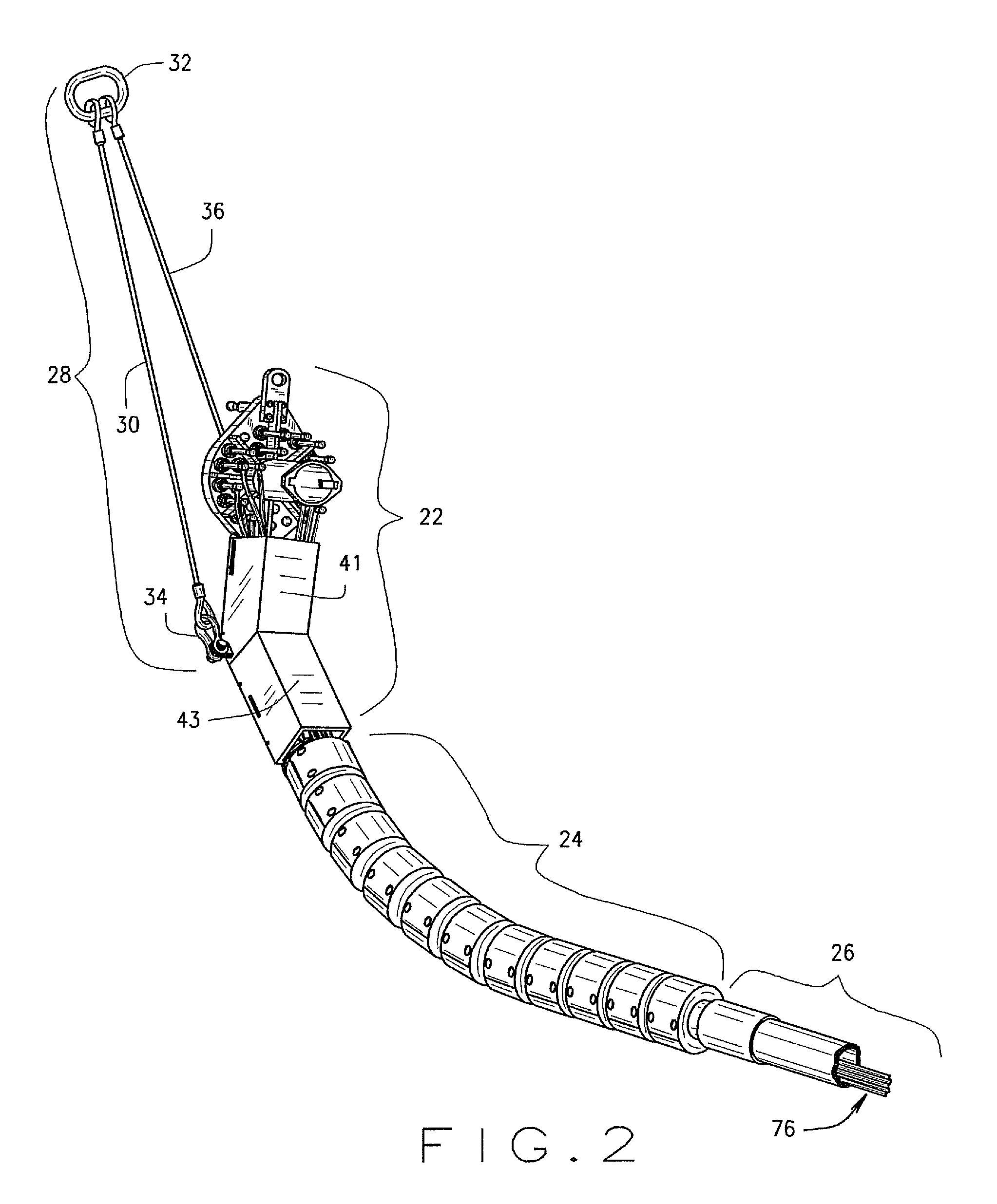Loose tube flying lead assembly
a technology of flying lead and loose tube, which is applied in the direction of sealing/packing, drilling pipes, and well accessories, etc., can solve the problems of delayed production of prior art flying, inability to support handling and installation loads, and inability to transmit loads to the frame, so as to prevent the over-hose from bunching and prevent unwanted exposure of the interior conduit
- Summary
- Abstract
- Description
- Claims
- Application Information
AI Technical Summary
Benefits of technology
Problems solved by technology
Method used
Image
Examples
embodiment 276
[0098]FIG. 15 is an alternative embodiment 276 of the interface element for a stab-plate produced by FMC® Technologies, not shown. The interface element 276 has a left lug 272 sized and arranged to engage the left slot 45 in the universal frame 40. The interface element 276 also has a right lug 274, sized and arranged to engage the right slot 47 in the universal frame 40. The interface element 276 has a plurality of holes 278, 280, 284 and 886 sized and arranged to engage the FMC stab-plate, not shown.
embodiment 300
[0099]FIG. 16 is an alternative embodiment 300 of the interface element for a stab-plate produced by Unitech, not shown. The interface element 300 has a left lug 272 sized and arranged to engage the left slot 45 in the universal frame 40. The interface element 300 also has a right lug 274, sized and arranged to engage the right slot 47 in the universal frame 40. The interface element 300 has a plurality of holes 302, 304, 306 and 308 sized and arranged to engage the Unitech stab-plate, not shown.
embodiment 320
[0100]FIG. 17 and 18 is an alternative embodiment 320 of the interface element for a stab-plate produced by Oceaneering, not shown. The interface element 320 may be fabricated as a single component, or for simplicity it may be fabricated from three components, 322, 324, and 324. The interface element 320 has a left lug 272 sized and arranged to engage the left slot 45 in the universal frame 40. The interface element 320 also has a right lug 274, sized and arranged to engage the right slot 47 in the universal frame 40. The interface element has a plurality of holes 328, 330 and 332 and a fourth hole, not shown, sized and arranged to engage the Oceaneering stab-plate, not shown.
PUM
 Login to View More
Login to View More Abstract
Description
Claims
Application Information
 Login to View More
Login to View More - R&D
- Intellectual Property
- Life Sciences
- Materials
- Tech Scout
- Unparalleled Data Quality
- Higher Quality Content
- 60% Fewer Hallucinations
Browse by: Latest US Patents, China's latest patents, Technical Efficacy Thesaurus, Application Domain, Technology Topic, Popular Technical Reports.
© 2025 PatSnap. All rights reserved.Legal|Privacy policy|Modern Slavery Act Transparency Statement|Sitemap|About US| Contact US: help@patsnap.com



